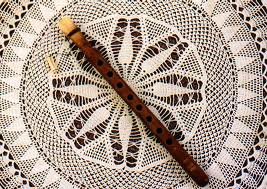No matter how calm ad relaxed you
are as a person, it’s very easy to succumb to stress throughout your day.
Things like being stuck in traffic on the way to work, discovering that the coffee machine is broken, learning
that your boss is gone and has left a pile of things to be done pronto, and not
meeting a deadline can set you into a whirlwind of stressful thoughts.
The problem is that stress does
not help the situation; it actually prevents you from being productive and
getting on with the rest of your day successfully.
While there are ways to make you
a more peaceful person overall, it’s still easy to fall into stress traps. Here
are five easy ways to calm the stress that creeps up on you, especially at
work.
COUNT TO 10
.jpg) An effective way to deal with
stressful situations is to count to 10, as it helps you mentally step away from
the stressful moment. Consider it the remote control of your life: You press
“pause”, and once you’re done counting to10, you press “play” again.
You’ll be in better shape to focus on
the task at hand.
An effective way to deal with
stressful situations is to count to 10, as it helps you mentally step away from
the stressful moment. Consider it the remote control of your life: You press
“pause”, and once you’re done counting to10, you press “play” again.
You’ll be in better shape to focus on
the task at hand.
SQUEEZE SOMETHING
Carry a stress ball or an object
that you can squeeze when times get tough. Wringing something other than your
colleague’s neck is an effective way to release your tension and stress.
TAKE A WALK
If you feel like a stressful scenario is getting the best of you, you can
physically remove yourself from the situation. Get up, take a quick walk
and get some air. Give yourself a few
minutes of downtime to clear your mind when things get too hectic.
I’m not suggesting that you run
away, but rather that you leave for a moment and come back to the situation
clearheaded and refreshed. If you don’t, you risk getting frustrated, which
won’t allow you to think properly. As a result, you’ll feel more stressed out
and your tension could get completely out of hand.
What if you’re stuck in traffic?
Of course, if the situation is
bumper-to-bumper traffic, it’s
 Impossible to physically remove
yourself. In that case, force yourself to think about something other than the
traffic for a few minutes. Close the window if all you hear are car horns and
construction work.
Impossible to physically remove
yourself. In that case, force yourself to think about something other than the
traffic for a few minutes. Close the window if all you hear are car horns and
construction work.
Another option is to pop in your favorite CD and focus on the music. Do
whatever you can to get your mind off the situation for a few minutes. Once
you’re relaxed, you can calmly think about the best alternate route to get to
work.
LOOK AT THE BIG PICTURE
Learn to keep things in
perspective. When you feel stress coming on, Dr. Richard Carlson, author of
Don’t Sweat the Small Stuff, suggests asking yourself if you will really care
about the issue you are worrying over a year from now. Chances are that the
majority of things you stress about in your day-to-day life are not life
threatening, unless they have to do with health and family.
Once you realize that a meeting
is not going as well as you’d hoped or you discover a stain on the crotch of
your pants, don’t freak out; these things will not determine the course of your
life and will not bring on catastrophe. Learn to take things as they come and
handle them with ease.
Taking situations a little
more lightly and cutting yourself some
slack will ease your stress level and alleviate the amount of pressure you
place on your shoulders. Of course, a final report at work is important and
could be a determining factor in your career: I’m not suggesting you undermine
your assignments and your goals. I’m only saying that when the going gets
tough, think of the situation as a challenge you can win, and if you fail, you’ll learn from
it.
BREATHE
Breathing is more than just a
function that keeps you alive; it actually helps clear you mind calm you down. So the next time your
heart palpitations are so loud that your entire office hears them, take deep
breaths to physically and emotionally calm yourself down. No one can think
properly when they feel like they are going into cardiac arrest.
BE STRESS- FREE
These are basic ways to deal with
stressful situations that can occur in everyday life. If you practice them, not
only will you feel less stressed, but will the people around you.

.jpg)
.jpg)





%5B2%5D.jpg)



.jpg)
























